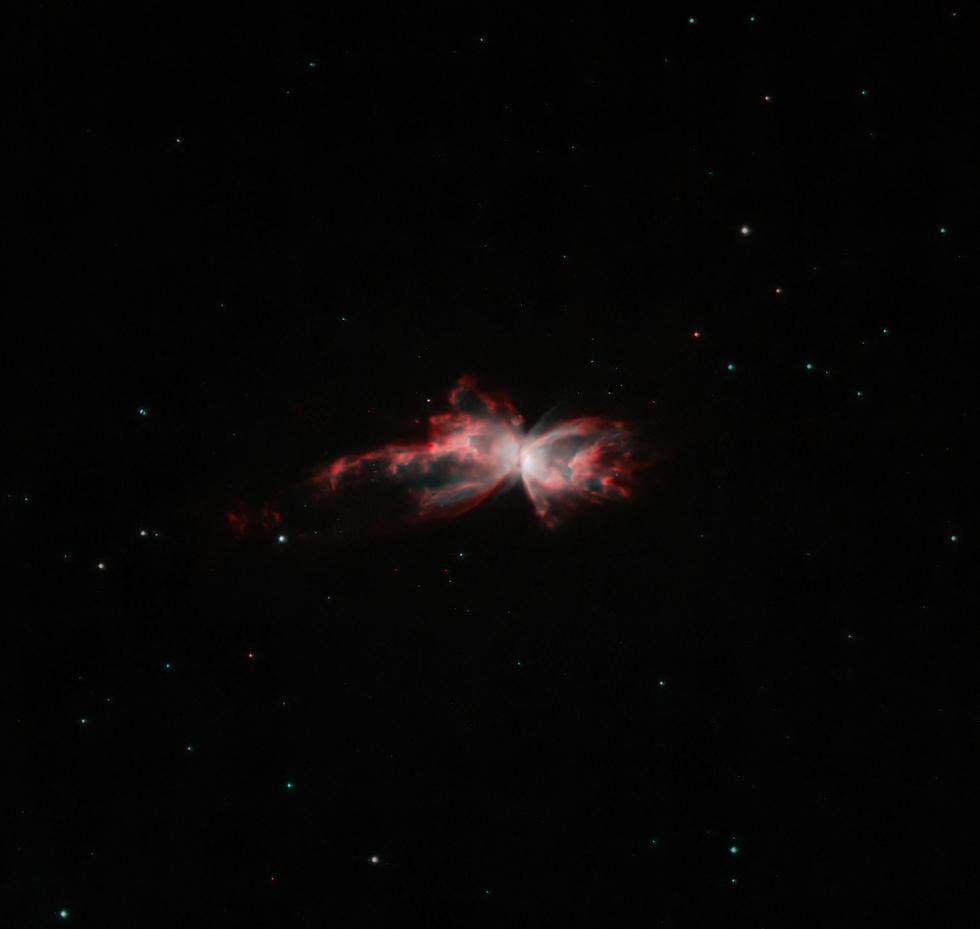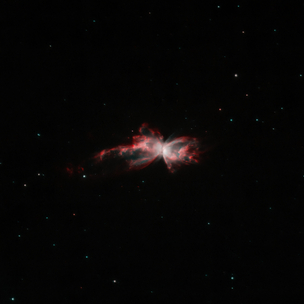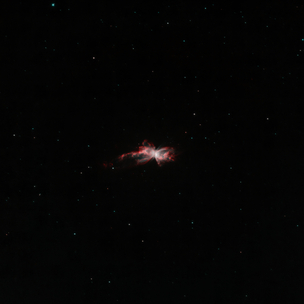Butterfly Nebula
2
29
Butterfly Nebula
HOO-image of the Butterfly Nebula (NGC 6302) acquired via an advanced request with CHI-3 (ASA RC-1000AZ).
NGC 6302 (also known as the Bug Nebula, Butterfly Nebula, or Caldwell 69) is a bipolar planetary nebula in the constellation Scorpius. The structure in the nebula is among the most complex ever observed in planetary nebulae. The spectrum of NGC 6302 shows that its central star is one of the hottest stars known, with a surface temperature in excess of 250,000 degrees Celsius, implying that the star from which it formed must have been very large.
Total integration time only 30 minutes.
3 subs of 300s with H-alpha and OIII.
NGC 6302 (also known as the Bug Nebula, Butterfly Nebula, or Caldwell 69) is a bipolar planetary nebula in the constellation Scorpius. The structure in the nebula is among the most complex ever observed in planetary nebulae. The spectrum of NGC 6302 shows that its central star is one of the hottest stars known, with a surface temperature in excess of 250,000 degrees Celsius, implying that the star from which it formed must have been very large.
Total integration time only 30 minutes.
3 subs of 300s with H-alpha and OIII.
SPECIFICATIONS
Telescope
CHI-3 (ASA RC-1000AZ
Camera
FLI PL16803
Location
El Sauce Observatory, Chile
Date of observation
18/05/2021
Filters
H-alpha and OIII
Processing
AstroPixelProcessor, Photoshop CC (incl. AstroPanel 4.2, Astronomy Tools, Topaz Sharpen AI & Denoise Projects 3 plug-ins)
Credits
Astrophotography Group "Volkssterrenwacht A Pien", Ghent (Belgium)
Comments
Nice one, and from a short integration time.
Thanks Jarmo, I'm also surprised that it already looks "that good" with the limited integration time. I consider to add extra data... Your M51 image looks really, really great! I'm still waiting for H-alpha data (via adv request) - hope to "enrich" even more the available data we already have from M51 ... (maybe it's overkill,
we'll see).





